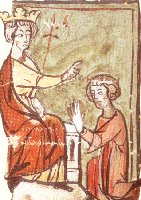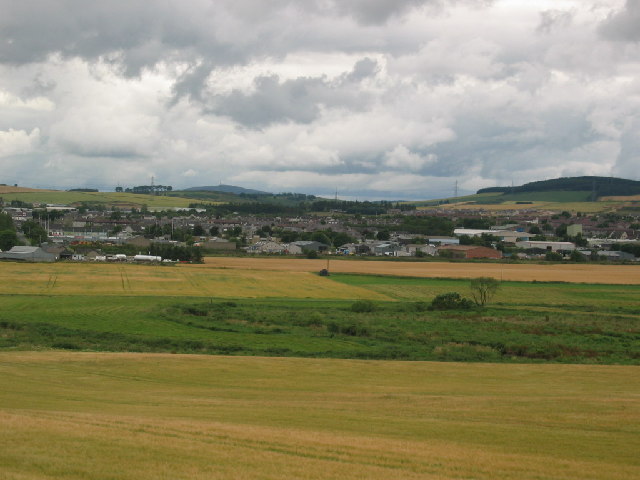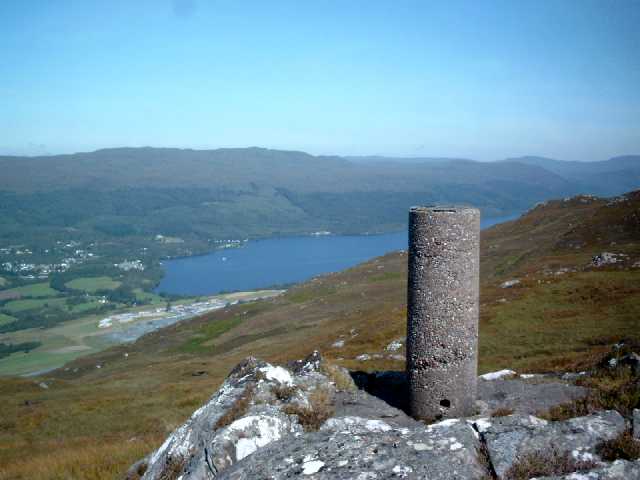|
Battle Of Inverurie (1308)
The Battle of Inverurie, also known as the Battle of Barra, was fought in the north-east of Scotland and was a victory for the Scottish king Robert Bruce over his chief domestic enemy, John Comyn, 3rd Earl of Buchan. Though part of the wider Wars of Scottish Independence, it is more properly viewed as an episode in a brief but bitter civil war. It was followed by the Harrying of Buchan, a violent act of destruction of property long remembered with bitterness in Buchan. The battle was fought in May 1308 according to Fordun. However, Barbour states clearly that it was fought at Christmas of 1307. Many current historians accept Fordun's date, but Barron and some others believe that Bower misinterpreted Fordun's notes. The battlefield was added to the Inventory of Historic Battlefields in Scotland in 2011. Background In February 1306, Robert Bruce and his supporters killed John III Comyn, Lord of Badenoch, also known as the Red Comyn. Comyn was a nephew of the former king John ... [...More Info...] [...Related Items...] OR: [Wikipedia] [Google] [Baidu] |
Wars Of Scottish Independence
The Wars of Scottish Independence were a series of military campaigns fought between the Kingdom of Scotland and the Kingdom of England in the late 13th and early 14th centuries. The First War (1296–1328) began with the English invasion of Scotland in 1296, and ended with the signing of the Treaty of Edinburgh–Northampton in 1328. The Second War (1332–1357) began with the English-supported invasion by Edward Balliol and the 'Disinherited' in 1332, and ended in 1357 with the signing of the Treaty of Berwick. The wars were part of a great crisis for Scotland and the period became one of the most defining times in its history. At the end of both wars, Scotland retained its status as an independent state. The wars were important for other reasons, such as the emergence of the longbow as a key weapon in medieval warfare. The First War of Independence: 1296–1328 Background King Alexander III of Scotland died in 1286, leaving his three-year-old granddaughter Margaret, M ... [...More Info...] [...Related Items...] OR: [Wikipedia] [Google] [Baidu] |
Edward II Of England
Edward II (25 April 1284 – 21 September 1327), also called Edward of Caernarfon, was King of England and Lord of Ireland from 1307 until he was deposed in January 1327. The fourth son of Edward I, Edward became the heir apparent to the throne following the death of his elder brother Alphonso. Beginning in 1300, Edward accompanied his father on invasions of Scotland. In 1306, he was knighted in a grand ceremony at Westminster Abbey. Following his father's death, Edward succeeded to the throne in 1307. He married Isabella, the daughter of the powerful King Philip IV of France, in 1308, as part of a long-running effort to resolve tensions between the English and French crowns. Edward had a close and controversial relationship with Piers Gaveston, who had joined his household in 1300. The precise nature of their relationship is uncertain; they may have been friends, lovers, or sworn brothers. Edward's relationship with Gaveston inspired Christopher Marlowe's 15 ... [...More Info...] [...Related Items...] OR: [Wikipedia] [Google] [Baidu] |
Battles Of The Wars Of Scottish Independence
A battle is an occurrence of combat in warfare between opposing military units of any number or size. A war usually consists of multiple battles. In general, a battle is a military engagement that is well defined in duration, area, and force commitment. An engagement with only limited commitment between the forces and without decisive results is sometimes called a skirmish. The word "battle" can also be used infrequently to refer to an entire operational campaign, although this usage greatly diverges from its conventional or customary meaning. Generally, the word "battle" is used for such campaigns if referring to a protracted combat encounter in which either one or both of the combatants had the same methods, resources, and strategic objectives throughout the encounter. Some prominent examples of this would be the Battle of the Atlantic, Battle of Britain, and Battle of Stalingrad, all in World War II. Wars and military campaigns are guided by military strategy, whereas bat ... [...More Info...] [...Related Items...] OR: [Wikipedia] [Google] [Baidu] |
1308 In Scotland
Events from the year 1308 in the Kingdom of Scotland. Incumbents *Monarch – Robert I Events * 23 May – Battle of Inverurie * after 23 May – Harrying of Buchan * 29 June – Battle of the River Dee * June–August – siege, capture and destruction of Aberdeen Castle by Scottish forces * August – King Robert defeats McDougall of Lorne at The Battle of the Pass of Brander * 25 December – Forfar Castle recaptured by Scottish forces ''unknown date'' * Last meeting of the Scottish Parliament to be held in Gaelic takes place at Taynuilt Deaths * 8 November – Duns Scotus, one of the most important philosopher-theologians of the High Middle Ages (born ) ''date unknown'' * Gilbert de Umfraville, Earl of Angus See also * Timeline of Scottish history __NOTOC__ This is a timeline of Scottish history, comprising important legal and territorial changes and political events in Scotland and its predecessor states. See also Timeline of prehistoric Scotland. To read about the ... [...More Info...] [...Related Items...] OR: [Wikipedia] [Google] [Baidu] |
Fyvie
Fyvie is a village in the Formartine area of Aberdeenshire, Scotland. Geography Fyvie lies alongside the River Ythan and is on the A947 road. Architecture What in 1990, at least, was a Clydesdale Bank was built in 1866 by James Matthews. The Tudor-style Old Wood Cottage, meanwhile, dates to 1824. Climate Fyvie has an oceanic climate (Köppen: ''Cfb''). The nearest weather station to Fyvie is located at Fyvie Castle, which is north of the village, and is above sea level. St Mary's Priory Now demolished, the priory was a cell of Arbroath Abbey, its location marked by a cross, made in 1868 of Corrennie granite. The priory was founded by Reginald de Cheyne around 1285. Being a small foundation, the prior doubled as parish vicar, responsible to the Abbot of Arbroath, who in 1325 wrote to warn the prior about the behaviour of his young monks. Fyvie Castle Fyvie Castle is reputed to have been built by King William the Lion in the early 13th century. It was the site of an ... [...More Info...] [...Related Items...] OR: [Wikipedia] [Google] [Baidu] |
Inverurie
Inverurie (Scottish Gaelic: ''Inbhir Uraidh'' or ''Inbhir Uaraidh'', 'mouth of the River Ury') is a town in Aberdeenshire, Scotland at the confluence of the rivers Ury and Don, about north-west of Aberdeen. Geography Inverurie is in the valley of the River Don at the centre of Aberdeenshire and is known locally as the Heart of the Garioch. It sits between the River Don and the River Ury and is only from the imposing hill of Bennachie. The town centre is triangular and is dominated by Inverurie Town Hall built in 1863. In the middle of the 'square' (as it is known locally) is the Inverurie and District War Memorial, capped by a lone Gordon Highlander looking out over the town. The main shopping areas include the Market Place and West High Street which branches off from the centre towards the more residential part of the town. South of the River Don is the village of Port Elphinstone, which is part of the Royal Burgh of Inverurie and is so called due to the proximity of the ... [...More Info...] [...Related Items...] OR: [Wikipedia] [Google] [Baidu] |
The Bruce Field
''The'' () is a grammatical article in English, denoting persons or things that are already or about to be mentioned, under discussion, implied or otherwise presumed familiar to listeners, readers, or speakers. It is the definite article in English. ''The'' is the most frequently used word in the English language; studies and analyses of texts have found it to account for seven percent of all printed English-language words. It is derived from gendered articles in Old English which combined in Middle English and now has a single form used with nouns of any gender. The word can be used with both singular and plural nouns, and with a noun that starts with any letter. This is different from many other languages, which have different forms of the definite article for different genders or numbers. Pronunciation In most dialects, "the" is pronounced as (with the voiced dental fricative followed by a schwa) when followed by a consonant sound, and as (homophone of the archai ... [...More Info...] [...Related Items...] OR: [Wikipedia] [Google] [Baidu] |
Strathbogie, Scotland
Strathbogie (Scottish Gaelic: ''Srath Bholgaidh'' or ''Srath Bhalgaidh'') is a district and river valley of northwest Aberdeenshire in Scotland, formerly one of the great divisions of that shire, called lordships or thanages, comprehending the whole original estate that King Robert the Bruce gave to the noble family of Gordon, the ancestors of the Duke of Gordon. By 1836, the lordship had become extinct. Name Strathbogie is first documented as "Strathbolgyn", a name which incorporates the elements ''strath'' meaning "broad valley"; ''bolg'', meaning "bag" or "belly"; and ''-aidh'', a suffix indicating an adjective. The name therefore means "bag-shaped valley". History The placename Strathbogie is first attested in a version of the Pictish King Lists dated to c. 1124, describing the death of Lulach, son of Macbeth and King of Alba, at Essie in Strathbogie in 1058. Strathbogie was probably granted in the 12th century as a provincial lordship by David I to David of Strathbogie, a ... [...More Info...] [...Related Items...] OR: [Wikipedia] [Google] [Baidu] |
Edward Bruce
Edward Bruce, Earl of Carrick ( Norman French: ; mga, Edubard a Briuis; Modern Scottish Gaelic: gd, Eideard or ; – 14 October 1318), was a younger brother of Robert the Bruce, King of Scots. He supported his brother in the 1306–1314 struggle for the Scottish crown, then pursued his own claims in Ireland. Proclaimed High King of Ireland in 1315 and crowned in 1316, he was eventually defeated and killed by Anglo-Irish forces of the Lordship of Ireland at the Battle of Faughart in County Louth. Early life Edward was one of five sons of Robert de Brus and Marjorie, Countess of Carrick, but the order is uncertain. Robert the Bruce was the eldest; in the past there was some dispute over whether Edward was second, or third behind Nigel, but one recent account has him fourth behind Nigel and Alexander. His date of birth is unknown, but it was probably not very long after Robert was born in 1274; he was old enough to be fighting in 1307 and to be given an independent command ... [...More Info...] [...Related Items...] OR: [Wikipedia] [Google] [Baidu] |
Uilleam II, Earl Of Ross
William II, Earl of Ross (Gaelic: ''Uilleam''; died c. 1323) was ruler of the province of Ross in northern Scotland, and a prominent figure in the Wars of Scottish Independence. William was the only child of William I, Earl of Ross and his wife Jean Comyn, daughter of William, Earl of Buchan. He succeeded to the earldom on the death of his father in 1274. In 1284 he joined with other Scottish noblemen who acknowledged Margaret, Maid of Norway as the heir to the unfortunate Alexander III. Following Margaret's death, he sided alternately with the Scottish and English interests. In 1291 he paid homage to Edward I of England at Berwick recognising him as overlord of Scotland. He was chosen as an auditor at the trial between John Balliol and Robert Bruce, when they competed before Edward to decide who would take the throne of Scotland. William was one of the leaders of the Scottish army at the Battle of Dunbar in 1296, when Edward invaded Scotland to punish John Balliol for refu ... [...More Info...] [...Related Items...] OR: [Wikipedia] [Google] [Baidu] |
Inverness
Inverness (; from the gd, Inbhir Nis , meaning "Mouth of the River Ness"; sco, Innerness) is a city in the Scottish Highlands. It is the administrative centre for The Highland Council and is regarded as the capital of the Highlands. Historically it served as the county town of the county of Inverness-shire. Inverness lies near two important battle sites: the 11th-century battle of Blàr nam Fèinne against Norway which took place on the Aird, and the 18th century Battle of Culloden which took place on Culloden Moor. It is the northernmost city in the United Kingdom and lies within the Great Glen (Gleann Mòr) at its northeastern extremity where the River Ness enters the Beauly Firth. At the latest, a settlement was established by the 6th century with the first royal charter being granted by Dabíd mac Maíl Choluim (King David I) in the 12th century. Inverness and Inverness-shire are closely linked to various influential clans, including Clan Mackintosh, Clan Fraser and Cl ... [...More Info...] [...Related Items...] OR: [Wikipedia] [Google] [Baidu] |
Great Glen
The Great Glen ( gd, An Gleann Mòr ), also known as Glen Albyn (from the Gaelic "Glen of Scotland" ) or Glen More (from the Gaelic ), is a glen in Scotland running for from Inverness on the edge of Moray Firth, in an approximately straight line to Fort William at the head of Loch Linnhe. It follows a geological fault known as the Great Glen Fault, and bisects the Scottish Highlands into the Grampian Mountains to the southeast and the Northwest Highlands to the northwest. The glen is a natural travelling route in the Highlands of Scotland, which is used by both the Caledonian Canal and the A82 road, which link the city of Inverness on the northeast coast with Fort William on the west coast. The Invergarry and Fort Augustus Railway was built in 1896 from the southern end of the glen to the southern end of Loch Ness, but was never extended to Inverness. The railway closed in 1947. In 2002, the Great Glen Way was opened. A long-distance route for cyclists, canoeists, and w ... [...More Info...] [...Related Items...] OR: [Wikipedia] [Google] [Baidu] |





.png)
.png)

